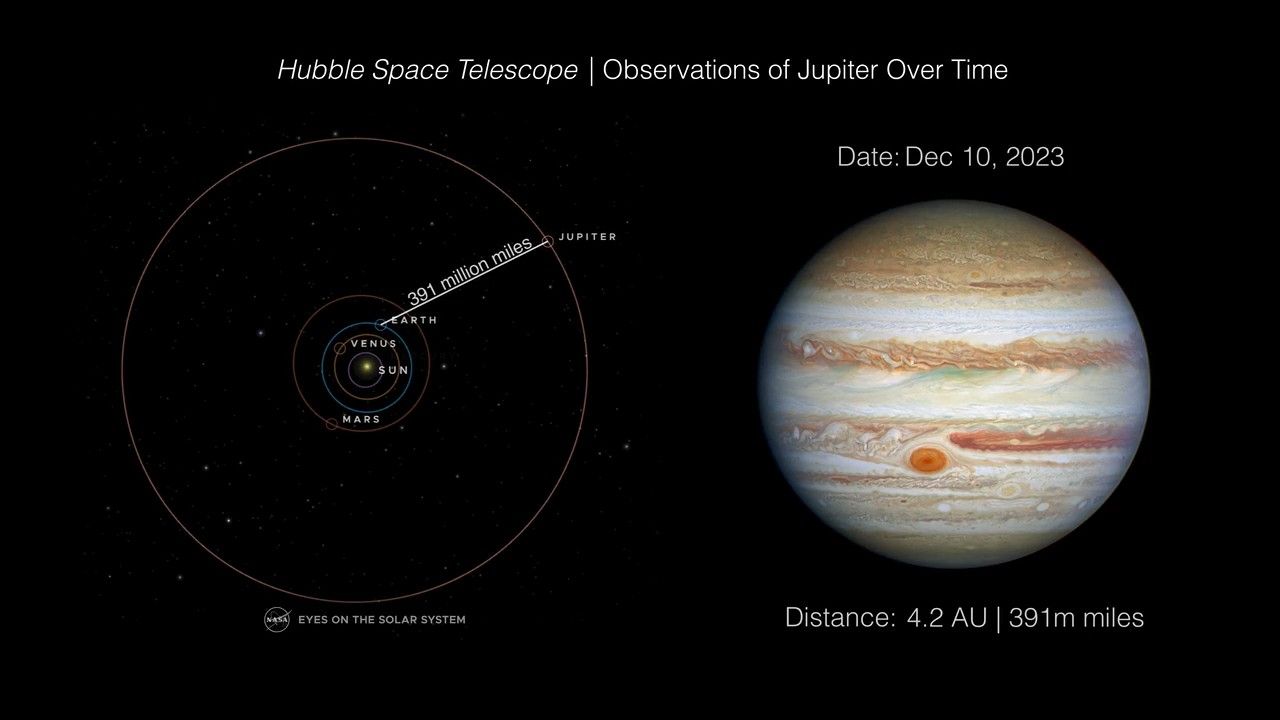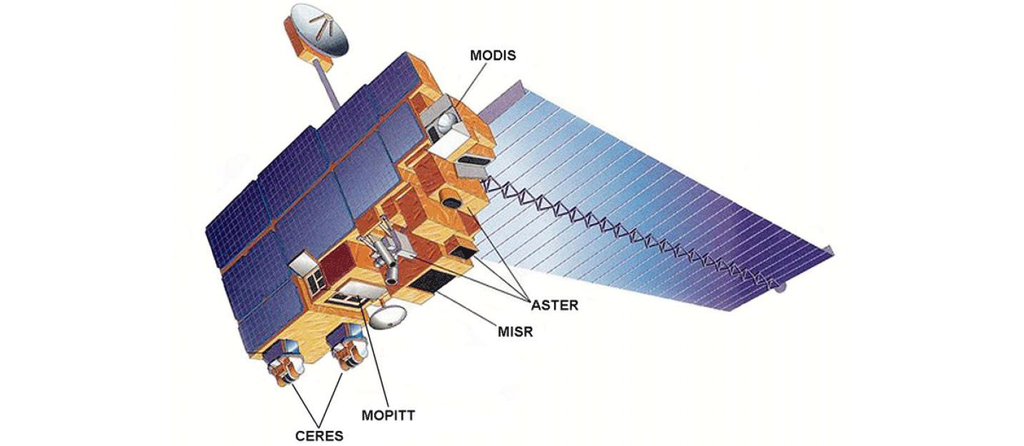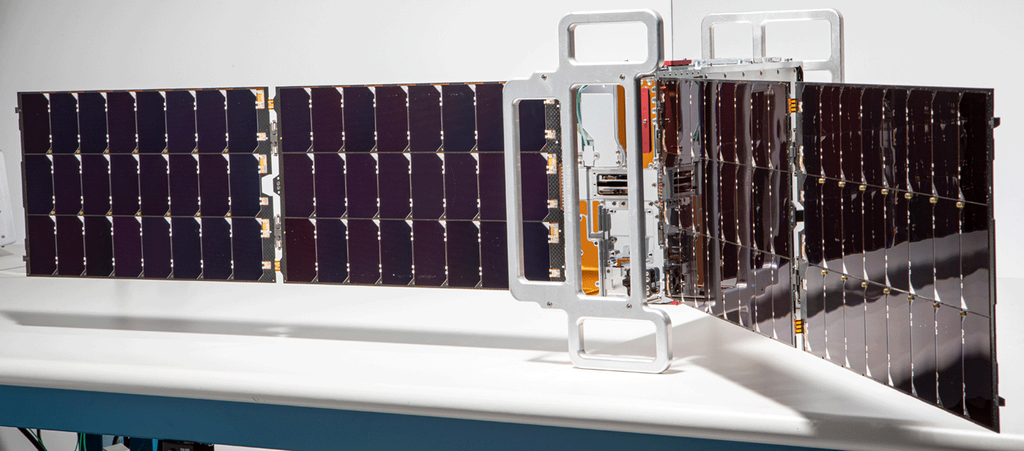1 min read
Jupiter Great Red Spot Movie
This time-lapse movie is assembled from Hubble Space Telescope observations spanning approximately 90 days (between December 2023 and March 2024) when the giant planet Jupiter ranged from 391 million to 512 million miles from Earth. Astronomers measured the Great Red Spot's size, shape, brightness, color, and vorticity over a full oscillation cycle. The data reveal that the Great Red Spot is not as stable as it might look. It was observed going through an oscillation in its elliptical shape, jiggling like a bowl of gelatin. The cause of the 90-day oscillation is unknown.
- Release DateOctober 9, 2024
- Science ReleaseNASA’s Hubble Watches Jupiter’s Great Red Spot Behave Like a Stress Ball
- CreditNASA, ESA, Amy Simon (NASA-GSFC); Video: Joseph DePasquale (STScI)
Related Images & Videos

Close-up of Jupiter's Great Red Spot (8-Panel)
Using Hubble Space Telescope data spanning approximately 90 days (between December 2023 and March 2024) when the giant planet Jupiter ranged from 391 million to 512 million miles from Earth, astronomers measured the Great Red Spot's size, shape, brightness, color, and vorticity...

Full Disk of Jupiter (8-Panel)
Using Hubble Space Telescope data spanning approximately 90 days (between December 2023 and March 2024) when the giant planet Jupiter ranged from 391 million to 512 million miles from Earth, astronomers measured the Great Red Spot's size, shape, brightness, color, and vorticity...

Observations of Jupiter Over Time
This animated diagram shows the position of Earth relative to Jupiter during a period spanning approximately 90 days (between December 2023 and March 2024) when the giant planet Jupiter ranged from 391 million to 512 million miles from Earth. During this period the Hubble Space...
Share
Details
Claire Andreoli
NASA’s Goddard Space Flight Center
Greenbelt, Maryland
claire.andreoli@nasa.gov
NASA, ESA, Amy Simon (NASA-GSFC)































